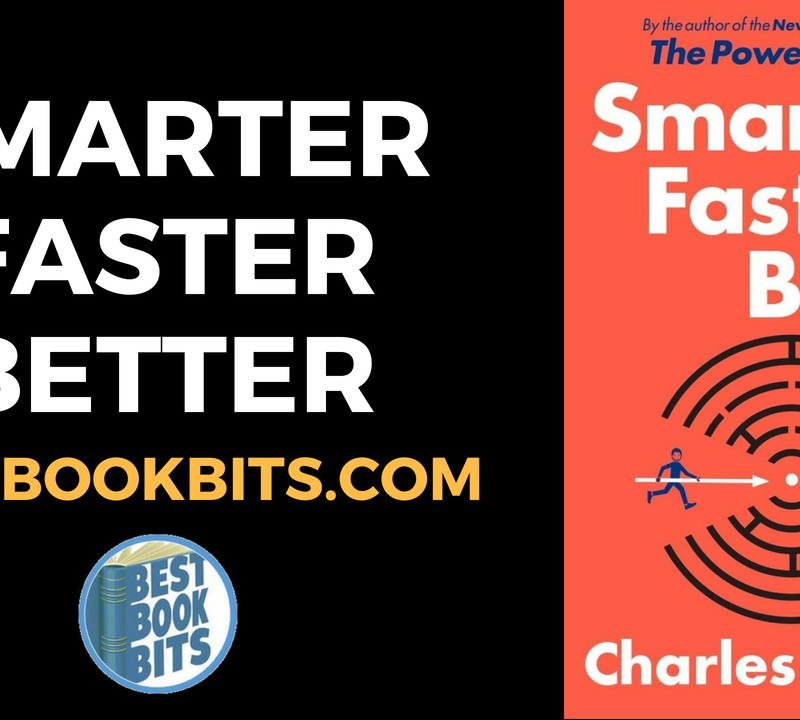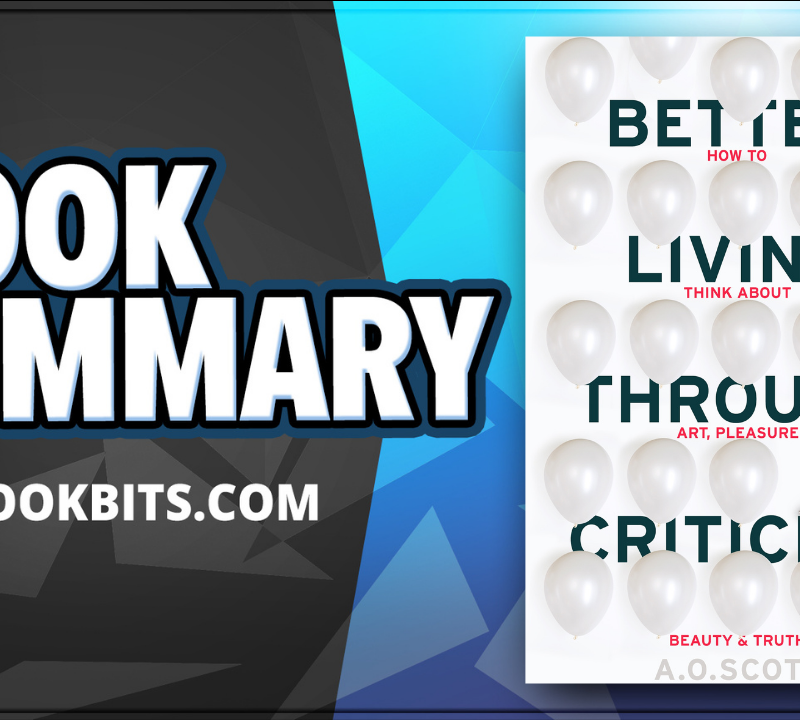JOIN THE ‘BEST BOOK CLUB’ NOW HERE
DOWNLOAD THIS FREE PDF SUMMARY HERE
STOP TRYING TO ACHIEVE YOUR GOALS BY YOURSELF AND BE COACHED TODAY HERE
CHECK OUT THE FOLLOWING Book | Summaries | Course | YouTube |Spotify | Instagram | Facebook | Newsletter | Website
Make It Stick: The Science of Successful Learning
Bottom of Form
Make It Stick is solidly grounded in a lot of empirical studies, many of which have opened up in the last decade a new understanding of how learning works. It exposes the fact that our intuition is subject to illusions that come from familiarity and so forth. For example, when we reread a passage over and over and get familiar with the text, we think we’re on top of it and then we’ll remember it.
Research shows, however, that those who are quizzed on the material learn and remember far better than those who spend their time just reading and rereading the material.
The act of retrieving new material from memory has a way of strengthening the connection of the new material to what you know and can do.
As people we are wired to forget and we are drawn to learning strategies that give us a feeling of progress. When we make that 20-foot putt over and over, we see improvements and we think that when we leave the golf course we’re on top of our game. What we don’t know is that all those improvements lean on short-term memory.
Science has shown us that it takes time for new learning to go from the part of the brain where memories are formed, the hippocampus, into other parts of the brain that store long-term memory.
The Biggest Learning Myth
The single biggest idea in the book is that we tend to focus on trying to get new learning into the brain and we do that through repetitive reading and practice. But what research tells us is that learning really happens when we try to get new knowledge and skills out of the brain.
Bottom of Form
The Truth About Learning: 7 Key Ideas from Make It Stick
- Learning Takes Longer than Many of Us Think
It takes time for learning to get embedded in the brain. Learning goes through the following initial steps.
STORING (short-term): Learning starts to happen when you are exposed to a new skill or a knowledge. The facts of that are stored in the hippocampus of the brain. Scientists call it memory traces, and they’re fairly abstract.
The job of the mind over hours is to try to make sense of that information. The brain rehearses it, fills in gaps, and tries to determine the important ideas.
CONSOLIDATION (long-term): Over time, often over night, the learning then moves into long-term storage, which is on other parts of the brain. And that’s where it’s connected to what you already know.
The really interesting part is that when you initially are exposed to the learning material, the traces are fluid or sort of plastic. The brain creates a narrative, shapes them in a way to try to make sense of them and understand how it relates to what you know.
Real learning takes time
The plasticity of knowledge turns out to be a tremendous asset for you in strengthening your knowledge down the road.
You help new learning go into long-term memory when you —
- Do some of this work consciously
- Think about how it relates to other things
- Wrestle with the idea in your mind
- Explain it to someone
- Take notes on it
- Draw about it or make an infographic or a map of it
- Do anything to allow that new idea to hang with other contexts that you already have in the brain
JOIN THE ‘BEST BOOK CLUB’ NOW HERE
DOWNLOAD THIS FREE PDF SUMMARY HERE
STOP TRYING TO ACHIEVE YOUR GOALS BY YOURSELF AND BE COACHED TODAY HERE
CHECK OUT THE FOLLOWING Book | Summaries | Course | YouTube |Spotify | Instagram | Facebook | Newsletter | Website
- Retrieval is the Key to Learning
Retrieval is crucial for learning. In order to really learn, we must retrieve. And when done with effort, retrieval makes consolidation stronger, and causes re-consolidation. Several ways to do this include:
- Using quizzes
- Re-reading and highlighting barely work
- Searching for the answer in our brains
- Putting new knowledge alongside other known knowledge
- Making mistakes and correcting them
When it’s hard to retrieve knowledge from memory, we think that’s a sign we’re not getting it. The truth is — the effort that you’re expending to retrieve it from memory is exactly what it takes to get it, master it, build depth, and then begin to build mental models to fit this knowledge in with other things that are related… The knowledge will come to the fore when you need them to.
- Spaced Retrieval is a Powerful Tool
Spacing in time is key in ensuring that we retrieve from long-term memory.
Spaced retrieval is a critical strategy for deepening the knowledge and updating it with things that you’ve subsequently learned since you were first exposed to that material.
We know about mass practice — recalling something over and over again and practicing the putt over and over again until we get it, but it isn’t that kind of retrieval.
What spaced retrieval is really about:
- Letting some time lapse
- Spacing out your practice at retrieving something from memory
When you try to call it up again later, you have to work at it a little bit.
What happens then when you recall:
- The knowledge becomes plastic again
- The brain goes through the consolidation process again
- The key ideas become even more salient
- The connections to other knowledge become even stronger.
The Single Biggest Idea from the Research this Book is Based On:
Spaced practice doesn’t mean doing it over and over again. It’s doing it now once or twice and letting time go by and then doing it again later when it’s a little difficult.
That is the biggest gem from the research about how to embed new learning into the mind and be able to pull it out and apply it again later, effectively. Do something with it.
The more effort you have to put in to retrieve the idea, the more effective the practice. The more likely you will be able to remember it at a future time. The harder it is, the better. As long as you are successful at it, you don’t have to relearn it.
“People want to know how long do I need to wait, and it depends on how difficult the material is going to be to remembered. If you’re in a social setting and you’re learning lots of people’s names, you need to retrieve in your mind at least different people’s names pretty quickly. Over time you can space that out and let longer periods go between efforts for retrieving that knowledge”
Bottom of Form
JOIN THE ‘BEST BOOK CLUB’ NOW HERE
DOWNLOAD THIS FREE PDF SUMMARY HERE
STOP TRYING TO ACHIEVE YOUR GOALS BY YOURSELF AND BE COACHED TODAY HERE
CHECK OUT THE FOLLOWING Book | Summaries | Course | YouTube |Spotify | Instagram | Facebook | Newsletter | Website
- Mix Up Your Practice
Mix up your learning practices
Typically, when you get to try to improve a skill – for example: practicing learning your solid geometry, how you find the volume of a wedge or how to find the volume of other solid geometric forms – you take one type of problem and you take that formula and you would apply it to many different examples.
A Baseball Perspective
In the case of baseball players that were part of a study done at Cal Poly, the team which was already very good at baseball went through a program to try to improve their batting. They were going to practice three different kinds of pitches: a curve ball, a fast ball, and a change-up.
- SIMPLE PRACTICE:Half of the players on the team practiced 15 fast balls, then they would practice 15 curve balls, and then 15 change-ups.
- After the first change-up, they knew the next 14 were going to be change-ups and they would just keep a hitting a change-up.
- This took place for quite a number of weeks and they got pretty good at each of those pitches. recognizing it and swinging at it successfully. If they had to choose another way to practice in the future, they would have chosen to practice that same way.
- MIXED PRACTICE: The other half of the team knew they were going to get 45 pitches in all from those three different types, but they never knew which kind the next pitch was going to be.
- During practice, while they showed some improvement, it wasn’t as dramatic as their friends who are practicing in a blocked fashion where the types were clustered.
- They didn’t feel too great about their performance.
Simple vs. Mixed: Which is better?
When the time came to play ball, those whose practice had been MIXED showed a far higher skill at identifying and successfully hitting those types of pitches than the others who knew which kind were coming.
It turned out that those who did SIMPLE practice did not learn as well as the others who struggled to recognize each pitch when it came and to respond to it properly.
The idea of mixing up problem types when you’re practicing or learning something is therefore counterintuitive, but has turned out to be a much stronger learning strategy. This applies in many different forms of studies across all different fields.
A really important distinction:
- Learning is not necessarily about the idea that we remember.
- Learning is really about being able to use that knowledge when you need it the most.
And that’s what’s happening in the case of the baseball hitters: when they needed it the most — the live game. The hitters who were doing more mixed practice, who were doing more effortful retrievals, turned out to be doing better than those who were not doing effortful retrievals.
Another great example: Training pilots and jet simulators
The person running the simulator throws in an unexpected problem with the pilot, such as: You’ve just lost an engine. You’re losing oxygen. You’re not getting fuel anymore. Whatever that issue is, the pilot has to respond very quickly and know how to respond.
Random Practice Makes You A Better Problem-Solver
The practice of solving the problems coming at us randomly is a well-proven and effective training tool. We all understand why that’s the case, we just don’t happen to think of it in our everyday lives and the things that we go about learning ourselves, just that notion of random practice.
One thing that’s true: when you switch from one problem to another, it has some of that effect of spacing out your retrieval, because there’s a space.
When you come back to the earlier problem, you can’t go to your short-term memory. You’ve got to work again —
- What kind of problem is this?
- What is the correct solution?
And then apply it.
JOIN THE ‘BEST BOOK CLUB’ NOW HERE
DOWNLOAD THIS FREE PDF SUMMARY HERE
STOP TRYING TO ACHIEVE YOUR GOALS BY YOURSELF AND BE COACHED TODAY HERE
CHECK OUT THE FOLLOWING Book | Summaries | Course | YouTube |Spotify | Instagram | Facebook | Newsletter | Website
- Embrace Difficulty
“It’s a funny thing, but we, especially those of us who are in the teaching profession, think that the more clear and simple we can make new knowledge, the better it’ll be learned and remembered. As learners, when it’s clear, we think, boy, that’s great. I get that.
“In fact it’s the opposite that is true, that when you have to struggle with the new knowledge a little bit, if you hear a lecture that’s very clear but it goes in a different sequence than the text you read and you have to think about how to reconcile those — that way of engaging with the material enables you to get it to stick.”
We have to break the illusion that simple and clear is a better way to learn. In fact, some difficulties that make it a little more difficult make it deeper and make it stick better.
Why It’s Difficult
Consolidating new knowledge has to take place in long-term memory, where things are aligned, moved, and connected. This is not easy for the following reasons:
- Learning requires retrieval over time, space, and variety.
- It requires anchors and cues in order to retrieve properly.
- Learning requires mixed practice.
- It requires you to seek ideas, patterns, and rules.
- Consolidation of learning requires tests. (According to research, 3 spaced tests provide the most powerful learning.)
But it all pays in the end. The more effort it takes to retrieve, the more effective the practice and the more powerful the consolidation.
Why Effortful Retrieval Makes Consolidations Stronger
- It causes our brain to go and reconsolidate those learnings to actually do more work with the learning that’s there.
- The effort involved is what brings this learning back in to the part of the brain where it’s fluid.
- The brain reshapes and updates that memory, saying — these points are the most important points because these are the points that really relate to this new situation I’m in and to what I’ve learned since.
- The connections in our long-term memory are not only stronger, but when you practice in different settings, in different sequences, you get associations between that learning and the other things that you know and are learning.
- You therefore build a more complex embedding of that knowledge in the mind.
- The knowledge now resides in many different places of the brain. The more places knowledge resides —
- The more likely you are to find a cue to bring it up
- Higher the likelihood that you can recall it
- The more you can apply it again later
- Your application skills will be more versatile.
- You’ll be better able to apply that knowledge in an unfamiliar setting.
Simply put — the more effort we put into retrieval, the better our memory gets. We learn more when we try to get the learning out of the brain than when we try to put something in there.
- Effective Learning Practices and Mindsets
Here are some of the effective practices that can enhance your learning skill in order to make new knowledge stick:
- Chunkingis great for retention
- Chunk down/chunk up information to make it easier to remember>
- Stimulate neurogenesis, or the creation of new neurons in the hippocampus, with proper diet, supplements, and food
- Choose growth mindsetover fixed mindset
- Growth mindset: I can constantly learn and improve.
- Fixed Mindset: My intellectual abilities are fixed and I cannot learn or improve.
- Make It Stick
Now that you’ve learned how learning actually takes place and gets embedded in the brain, you can already make new knowledge stick.
To do that, simply apply these 3 key practices whenever you want to learn something new for the long term:
- Create self-quizzes in order to retrieve more often
- Reflect:
- What did I do?
- How can I do it better?
- What needs to be changed?
- Free recall
- Fill an empty sheet at end of day of what you learned
JOIN THE ‘BEST BOOK CLUB’ NOW HERE
DOWNLOAD THIS FREE PDF SUMMARY HERE
STOP TRYING TO ACHIEVE YOUR GOALS BY YOURSELF AND BE COACHED TODAY HERE
CHECK OUT THE FOLLOWING Book | Summaries | Course | YouTube |Spotify | Instagram | Facebook | Newsletter | Website













